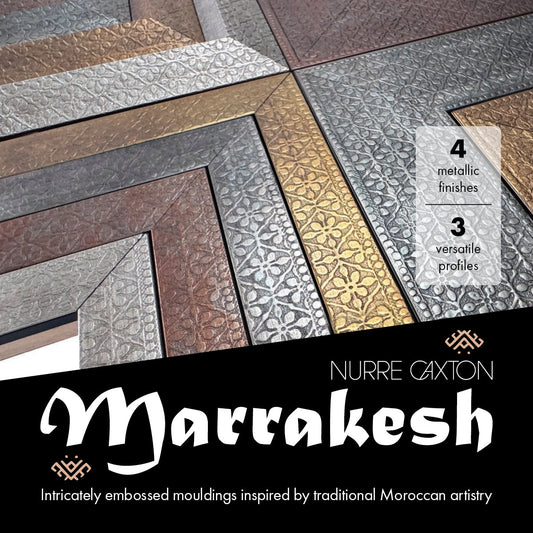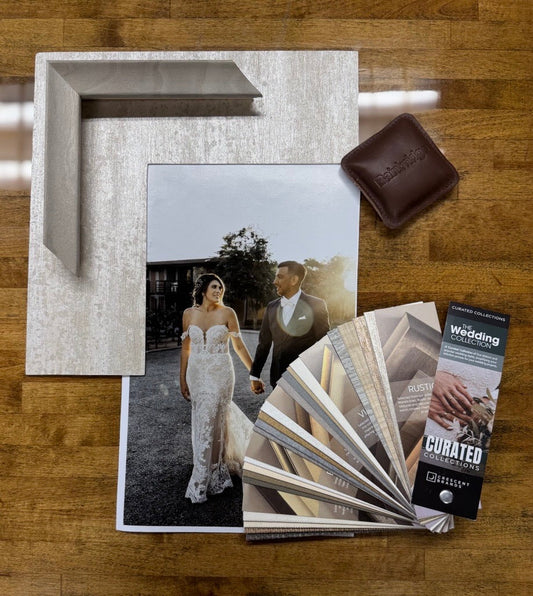You are ready to frame your art, and it’s time to choose the perfect matboard. With hundreds of colors, textures and fabrics to choose from, selecting the right visual combination of matboards along with the frame and art can elevate the finished work to a unique and stunning statement piece. But there’s more to decide beyond the aesthetic choices. Matboard serves an important function in protecting artwork. Crescent offers matboard in a variety of quality levels, which are conveniently classified as good, better and best. Get to know the differences of our quality levels, and you’ll find the Crescent matboard that is perfect for your artwork and desired level of art preservation.

What’s Under the Surface?
Here’s a quick lesson on matboard construction. Matboard is made from two basic types of pulp: wood pulp and cotton pulp. Cotton pulp is naturally acid-free and lignin-free. While it is completely recyclable, it is significantly more expensive to produce compared to wood pulp. It is the safest, time-proven substance for making art substrates as well as mounting and matting boards for art preservation.
Wood pulp is used in the vast majority of matboard construction. It’s relatively inexpensive, plentiful and recyclable. However, wood naturally contains acid, which over time can transfer to the artwork and cause damage. Further, wood naturally contains a substance called lignin, which over time breaks down to acid and can also result in artwork damage.
Acid-Free Is Not Enough!
There is a lot of confusion and misinformation about the term “acid-free”. This term became more commonly used several decades ago as consumer interest rose in scrapbooking and paper crafting hobbies. Suddenly, everything including papers, boards, pens, inks and embellishments all claimed “acid-free” on their labels. For any wood pulp-based products, this generally meant that calcium carbonate was added, but (and it’s an important “but”) the lignin remained just waiting for the calcium carbonate to deplete so it too could convert to acid. More accurately, most wood pulp-based products with calcium carbonate added are temporarily buffered to be pH neutral. How temporary that buffering may be depends on many factors such as overall acid and lignin content, air quality, heat and humidity. To make matboard truly acid-free, the wood pulp must be free of both acid and lignin. Wood pulp must be chemically treated to remove both the acid and the lignin. The resulting product is known as alpha-cellulose pulp. Converting wood pulp to alpha-cellulose pulp adds to the final product’s cost but is the only way to permanently remove both acid and lignin, and to make the resulting matboard safe for artwork for the long term.
Good/Better/Best
Acid-free, lignin-free, alpha-cellulose, oh my! How does all this chemistry class knowledge transfer to Crescent matboard product categories? Here’s where we break it down quite simply into our Good/Better/Best story.
GOOD
![]()
Good All Crescent matboards in this category are constructed of wood pulp that is treated with calcium carbonate to slow the effects of acid and lignin. These are also known as decorative matboards.
You’ll find a variety of surface colors, patterns and textures in this category, as well as options that include cream, white and black cores. Crescent’s GOOD quality matboard is recommended for non-conservation framing of non-valuable art and general presentations. Brands included in this category include:
- Decorative Matboard
- International Whitecore®
- Black Core
- Berkshire® (Contract grade)
BETTER
![]()
Crescent’s BETTER quality matboard brands are constructed of alpha-cellulose, or wood pulp that has both acid and lignin removed.

Available in an extensive range of colors, textures, fabrics and color options, our alpha-cellulose matboards provide the minimum levels of conservation framing and are recommended for fine art prints, limited edition prints, valuable documents and original photography. Crescent’s BETTER brands include:
- Moorman®
- Select®
- Ultiblack®
- BriteCores™
BEST
![]()
Best There’s only one way to describe Crescent’s BEST quality matboard, and that is 100% cotton, also referred to as rag. Industry standards make the same requirements for museum-quality art framing. Crescent recommends our BEST quality matboard for any valuable works of original art, historical documents, original photography and heirloom needlework. Crescent’s BEST brand is:
- RagMat® Museum

Note that even though Crescent’s 100% cotton RagMat Museum matboards are naturally acid-free and lignin-free, calcium carbonate is still added as an added protection to any unintended acid encounters such as pollution or other impure air quality.
There are a few exceptions in the RagMat Museum family that do not contain the calcium carbonate additive. These are matboards designed specifically for artworks that are best preserved in a lower alkaline environment, such as protein-based textiles including wool, leather and silk, and some vintage photography processed with protein-based emulsions.
Get more information on our Good, Better and Best categories in the Good Better Best Story flyer.
Professional framers can also order our RagMat Museum Kit #RMMSKIT (pictured here).

Now that you understand the different quality levels available in Crescent’s extensive matboard family, you can confidently choose the right matboard for the art. Whether it’s a child’s drawing, reproduction print or original masterpiece, there’s a Crescent matboard that’s perfect for every piece of art.


















